My time with Baldur’s Gate 3 can best be summed up by what it made me do: After spending all of Saturday playing it, I re-downloaded Divinity Original Sin 2, a game I previously played for over 100 hours. Original Sin 2 is one of my favourite games, so BG3 deserves serious credit for reigniting that itch and causing it to burn with such manic scratchability that I’m now considering another 100-hour playthrough. But, you might ask, why not just play Baldur’s Gate 3? Therein lies the problem: BG3, with its myriad of bugs and overwhelming opening, made me pine for its own spiritual predecessor.
The new game launches in early access today, on PC, Mac, and Stadia. What follows are not my impressions of a finished game, but of an in-progress build that everyone else can try soon.
While BG3 is a sequel to genre-defining PC RPG classic Baldur’s Gate 2 in name, it is mechanically and tonally a follow-up to developer Larian’s genre-redefining masterpiece Divinity Original Sin 2. The battle system and granular environmental interactivity of the latter have been modified to fit dice-based Dungeons & Dragons rules, but they nonetheless function extremely similarly to the way they did in Original Sin 2. The first time I spilled a puddle of oil on the ground, causing two powerful enemies to fall on their butts, and decided to commemorate the moment just before I set all of the oil on fire by naming a save file “Mwahahaha,” I knew I was home. But while Baldur’s Gate 3 modifies the formula in some very fun ways, it also overwhelms the player with a kitchen sink approach to world design, and the version I played suffered from bugs that left me frustrated at nearly every turn.
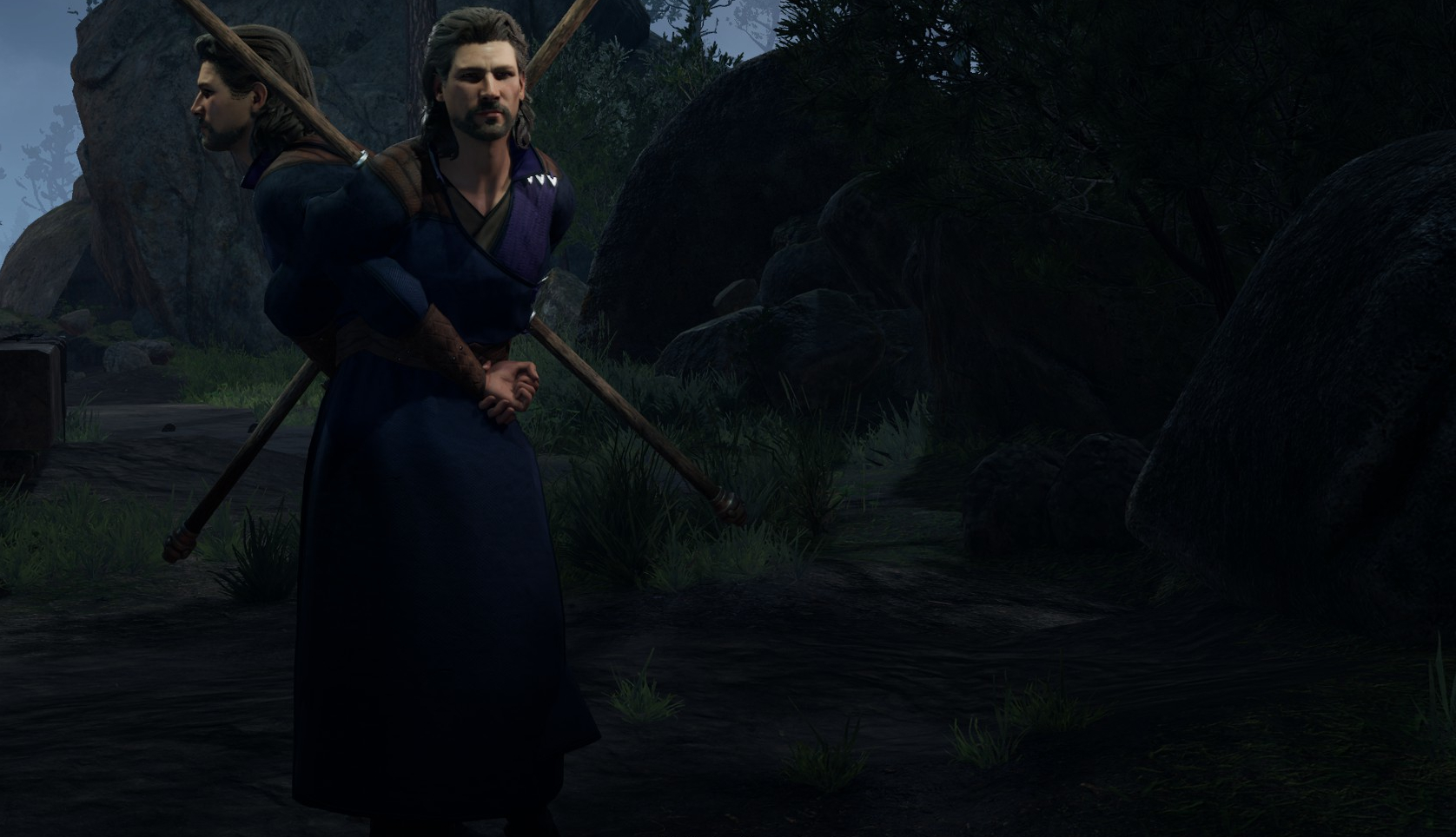
Typically, I’d save the bug talk for later in a piece like this, bearing in mind that Baldur’s Gate 3 is in early access and features just the first of three planned chapters, so some awkwardness is par for the course. But for the first 15 or so hours, my experience was inextricable from bugs: Characters duplicating in cut-scenes, characters clipping into each other in cut-scenes, quests glitching out and dead-ending, dialogue prompts appearing before they were supposed to, battles in which I could suddenly no longer advance or end my turn, crashes, crashes, and more crashes. On numerous occasions, I thanked every obscure god in the D&D universe that I’m a compulsive manual saver, so at least I had files I could jump back to when my main one broke.
Yesterday, I spent around five hours with an updated version of the game that contained fewer bugs, but I still encountered a crash, two quest dead ends (one of them attached to a main quest), and all sorts of visual weirdness.
I sympathise with the developers at Larian, who are doing their best to create a gargantuan clockwork world during a pandemic, but it’s easy to see why they delayed the early access release multiple times. They probably should have delayed it again. Clearly, though, they’re working extremely hard to crush bugs, so maybe things will be better in a week or two.
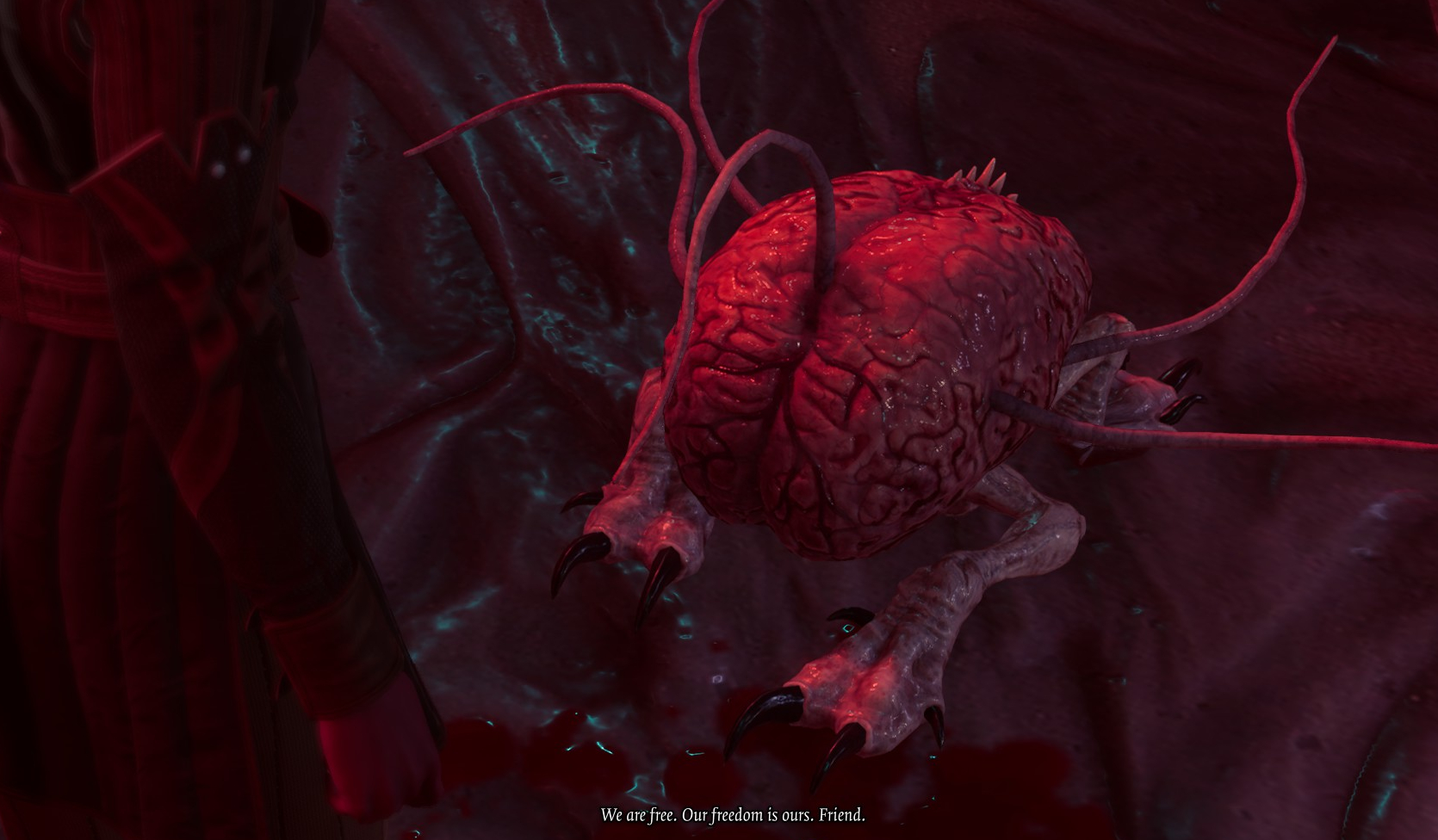
It’s an enormous bummer, because Baldur’s Gate 3 wowed me initially. It began aboard a tentacular flying ship belonging to D&D’s squid-like Illithid race. The setup was great: these mind flayers, as characters commonly call them, had just implanted my character and several others with a tiny tadpole creature that would ultimately transform us into one of them. The scene was unnerving, to say the least — more Planescape Torment than Baldur’s Gate 2. Before long, I teamed up with a talking brain that I felt the need to protect at all costs. Then dragons attacked the ship, and we all escaped in a setpiece that made clear BG3‘s grand ambitions: Original Sin 2‘s mechanical brilliance married to big-budget panache.
My only worry, at that point, was that BG3 might end up being too po-faced and serious. Then my character got knocked out of the Illithid ship by an errant chunk of brain, and the game’s logo appeared on the screen. A sight gag for the ages.
Once I was on the ground, things opened up in a big way. I wound up on a beach, and my objective was clear, mirroring what I think every time I log onto Twitter: I needed to remove my brain worms, or else I would die. It gave me flashbacks to Divinity Original Sin 2‘s first real area, Fort Joy, in which main characters explored a beach in order to find someone who could remove collars that sealed their powers. Fort Joy’s masterstroke, though, was in giving you tremendous freedom of choice within a relatively constrained environment. You could talk, sneak, or blast your way through, or combine those approaches, or stumble across all sorts of secret paths. But it never felt overwhelming, because one way or another, you had to escape. You were always pushing toward one goal.
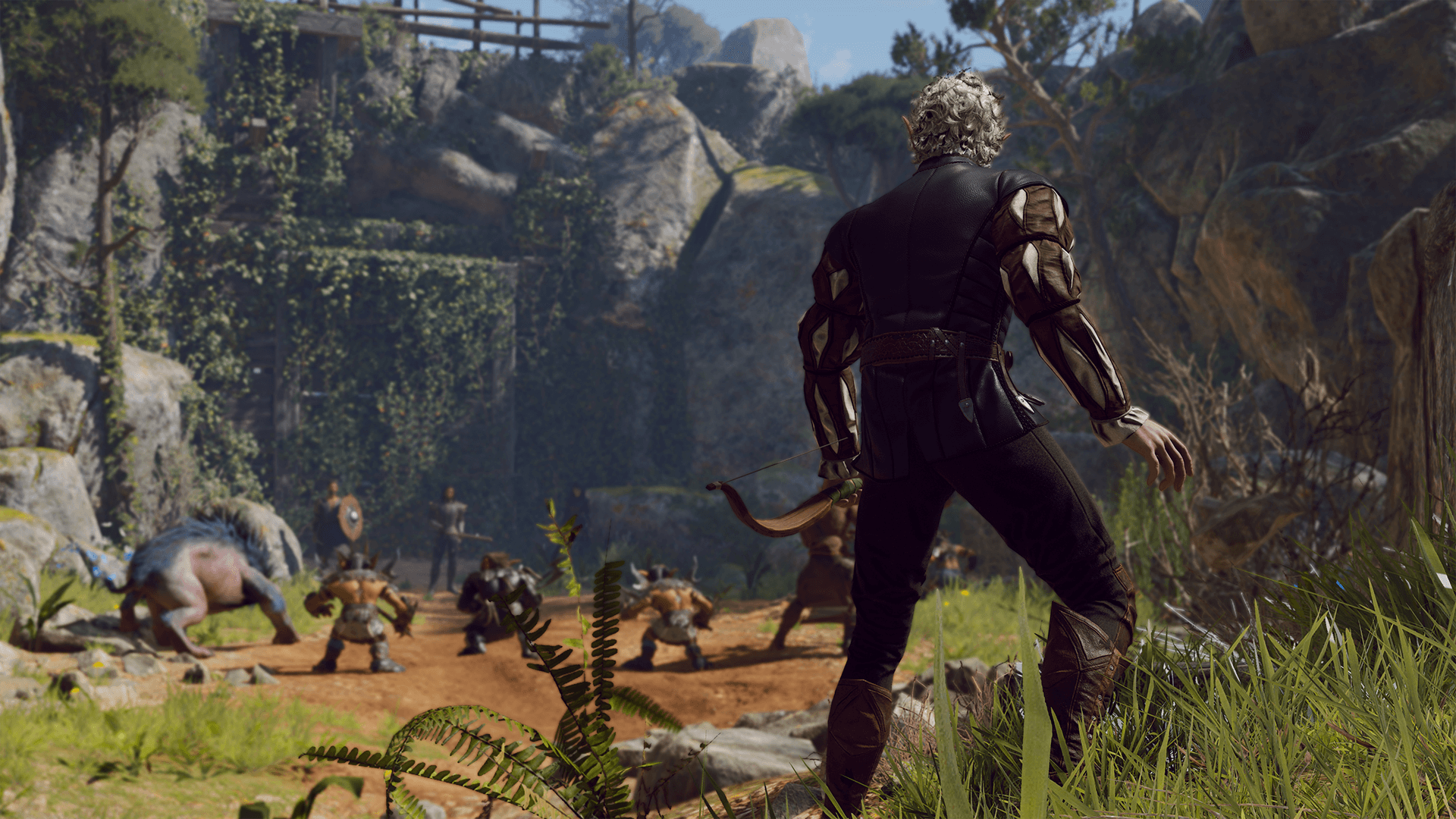
Baldur’s Gate 3, on the other hand, immediately drops you into an open area more akin to Divinity Original Sin 2‘s larger second and third chapters. Within 30 or so minutes of my arrival, I’d already collected three party members. After 30 more minutes, I’d collected two more. I’d also been pointed in the direction of several different people who could potentially vacuum the brain worms out of my head, each of whom were directly or indirectly tied to different characters in my party. I barely knew any of my party members and was given no time to get to know them individually. Every time I made a decision, the top corner of my screen erupted into a torrent of “[Party member] disapproves.” On one hand, this forced me to behave the way I normally would, rather than to earn specific characters’ approval, but I also just felt like I was screwing up all the time, no matter where I went or what I did.
This drowning feeling was compounded by the fact that Baldur’s Gate 3 didn’t give me much in the way of direction. Yes, I had a goal, but my objectives were littered across a huge map, and characters argued about how I should solve them. It didn’t help that the game didn’t do much to explain itself. There were a series of tutorial tooltips, but they only gave me the barest basics of how crucial mechanics like combining spell elements and splitting my party worked. For me, somebody who’d spent over 100 hours with Divinity Original Sin 2, that was fine. It didn’t take me that long to manually relearn everything, though it was kind of annoying that I had to. Speaking with a colleague who was also playing, I was taken aback by how much BG3 just doesn’t explain. She didn’t even realise that she could split her party and, say, send one character into battle while others existed outside the turn-based bubble and could sneak in and score a free attack. That is such a crucial mechanic, both in terms of making battles manageable and just having fun experimenting. BG3, however, doesn’t even try to open players’ minds to those possibilities.
That’s a big problem, because the game also doesn’t do much to explain the new mechanics it’s stacked on top of those intricate systems. Dice rolls now influence the effectiveness of your attacks. If you roll a 20, a die appears on screen before your character blasts an enemy into ragdoll oblivion. It’s cool as heck. This system also influences dialogue, meaning that you can succeed or fail on all sorts of rolls: perception, deception, intimidation, investigation, and so on. You can mouse over these options to see your odds, but they probably won’t make much sense to you if you’re not already fluent in D&D. Pop quiz: Can you tell me what it would mean to roll one D20+3 with a modifier from charisma and your knowledge of medicine? If you can’t, this game will probably confuse you at first.
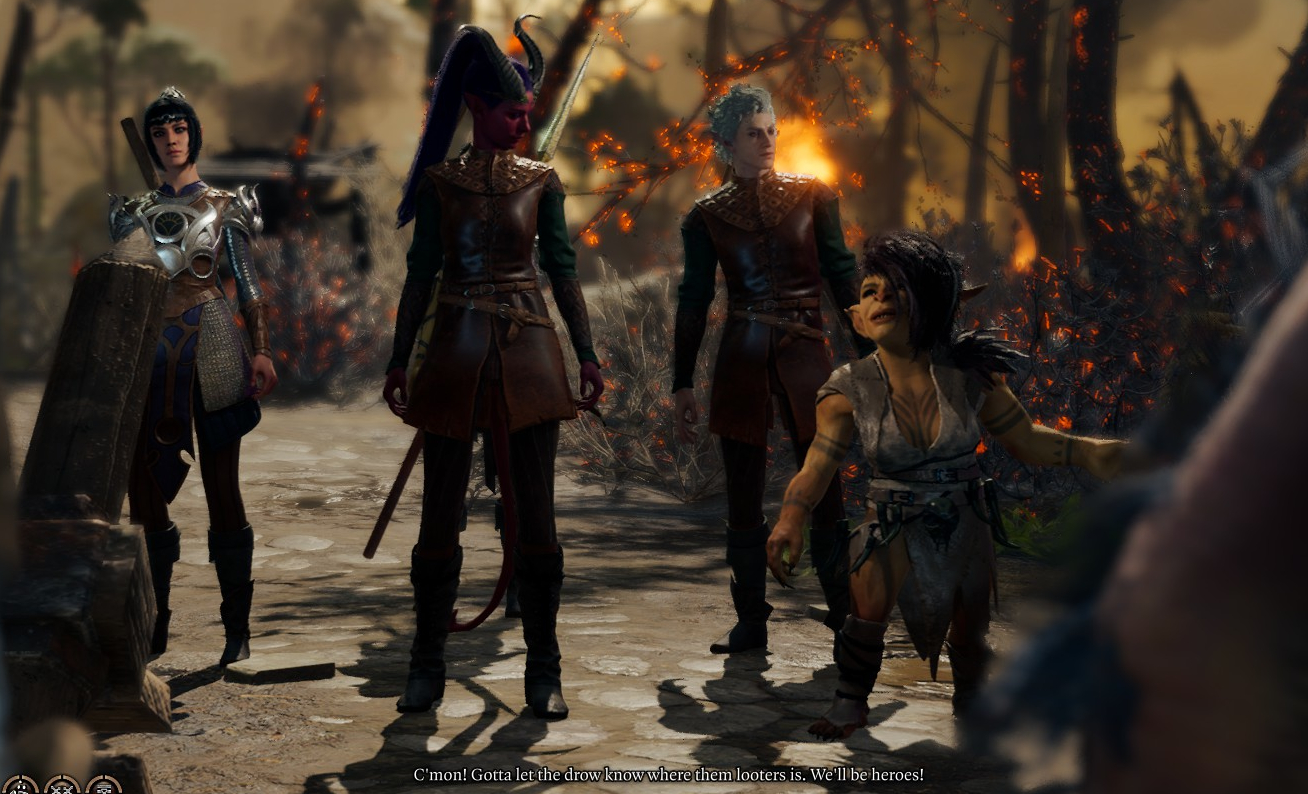
Even as somebody who has played D&D, listened to a lot of D&D podcasts, and played Divinity Original Sin 2, this system still threw me a little. In concept, I like the idea of dice rolls influencing dialogue. It feels great to succeed on a big roll and convince somebody of something you had no business convincing them of. But the fun of D&D dice rolls is when things don’t go according to plan: You critically fail a roll and accidentally burn down somebody’s house or something. In Baldur’s Gate 3, it’s mostly just a succeed or fail thing. Roll above a certain numeric threshold, and you can convince a band of warriors to stick around and defend refugees from goblins. Roll poorly, and they’ll leave. It’s like the persuade option in other video games, except sometimes it misfires. That can be frustrating, and it took me a while to push away the urge to reload my save every time I botched a roll that my stats said I had a high chance of pulling off.
In the game’s best moments, this kind of failure forces you to explore other options, of which there are thankfully many. The map is lousy with quests, which you can complete however you want. As in Original Sin 2, the number of choices you can make in terms of the routes you take through quests, who you side with, who you kill, how you kill them, or if you kill anybody at all eclipses other games. In some cases, you can also just not do quests.
In a particularly cool structural twist, Baldur’s Gate 3 also contains a chronological element; in order to fully recover from battle and regain your spell slots (that is, your limited ability to use spells), you have to camp. Camping means ending a day. If you, say, approach a burning building, talk to soldiers outside it about their plight, and then camp, you will wake up to find that, shock of all shocks, the building burned down, and your party member who knew those soldiers is beside himself with guilt that he didn’t do anything to help. That’s just the beginning, too. Camping also advances your relationships with your party members, as well as (for better or worse) the worms living in your brain. Before long, your camp fills out with all sorts of strange characters — including a dog you can pet and, if you have the right abilities, talk to.
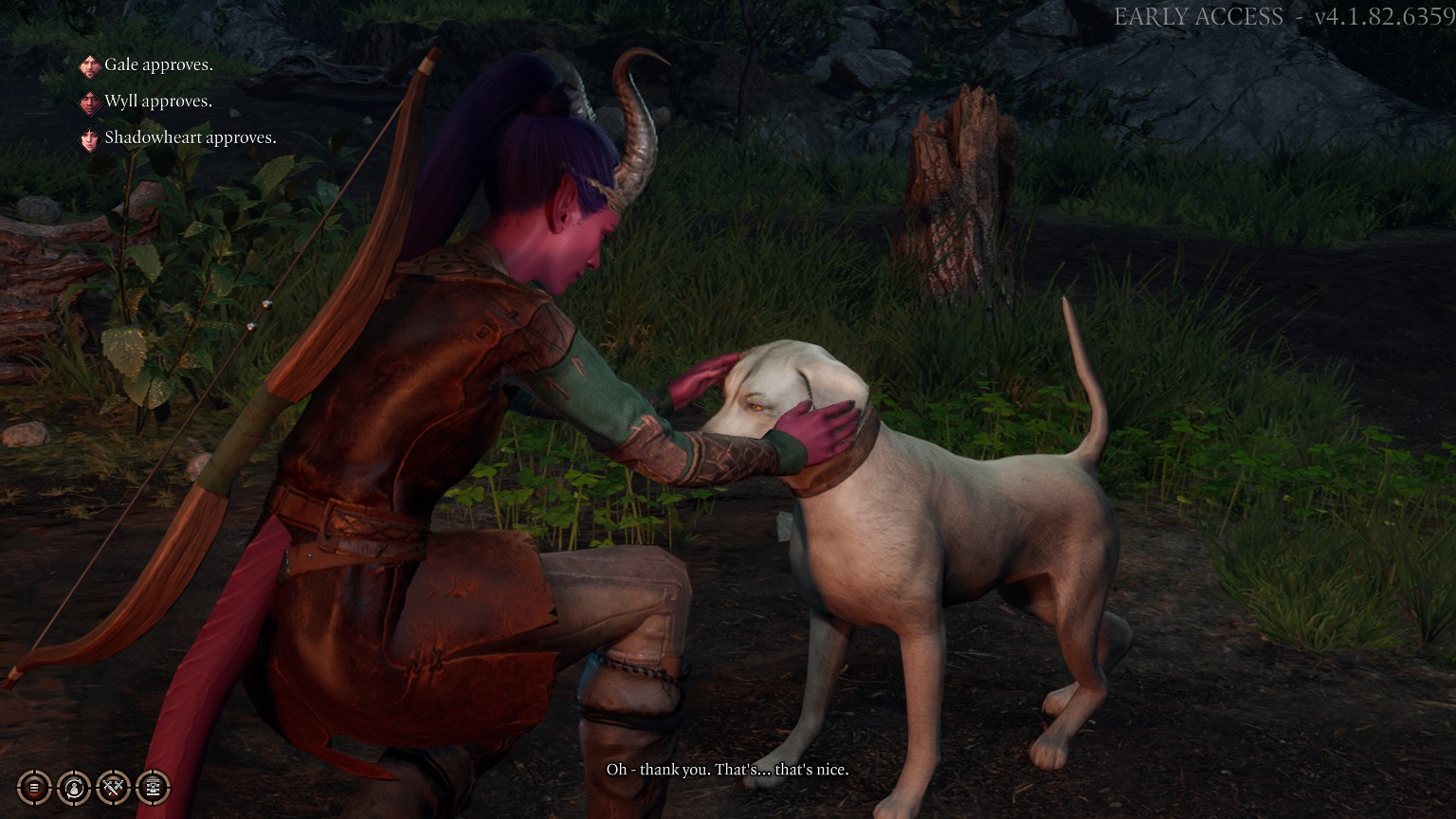
In discussing these extremely cool features, I’d be remiss if I didn’t explain why I failed to save the people in that burning building in the first place: I tried, but midway through the painstaking process of solving what was an admittedly very cool turn-based environmental puzzle, the game just stopped letting me take turns. I had to restart from an earlier save, and at that point, I just said, “Fuck it.” That’s really my experience of this early access version of Baldur’s Gate 3 in a nutshell: One step forward, two steps back. The steps forward are big and exciting, but it’s just so disheartening every time something breaks or I feel like I’m being pulled in an impossible number of different directions. Underneath all of this is an incredible game, one that puts even Divinity Original Sin 2 to shame. It is, then, a different sort of shame that Baldur’s Gate 3 isn’t even close to being there yet.
Because it’s in early access, expect improvements over time. As the developers noted recently, “If you want a full polished experience, wait until we release version 1.0.” That, according to the game’s Steam page, will take “at least one year,” so there’s a long wait ahead.
Recommended Stories
[referenced id=”1183069″ url=”https://www.kotaku.com.au/2020/09/baldurs-gate-3-early-access-beta-delayed-a-week/” thumb=”https://www.gizmodo.com.au/wp-content/uploads/sites/3/2020/09/24/fjivaqwicwdcmq8uuocw-300×169.png” title=”Baldur’s Gate 3 Early Access Beta Delayed A Week” excerpt=”Baldur’s Gate 3 won’t make its early access debut on PC and Stadia at the end of this month after all. Instead, it’s been pushed back to October 6.”]
[referenced id=”970956″ url=”https://www.kotaku.com.au/2020/08/baldurs-gate-iii-delivers-the-first-actually-good-not-e3-developer-livestream/” thumb=”https://www.gizmodo.com.au/wp-content/uploads/sites/3/2020/08/19/rzfuhu7bvrpp1aywlmhr-300×170.png” title=”Baldur’s Gate 3 Delivers The First Actually-Good Not-E3 Developer Livestream” excerpt=”Now this is how you do a Winter of Not-E3 video game livestream.”]

Leave a Reply